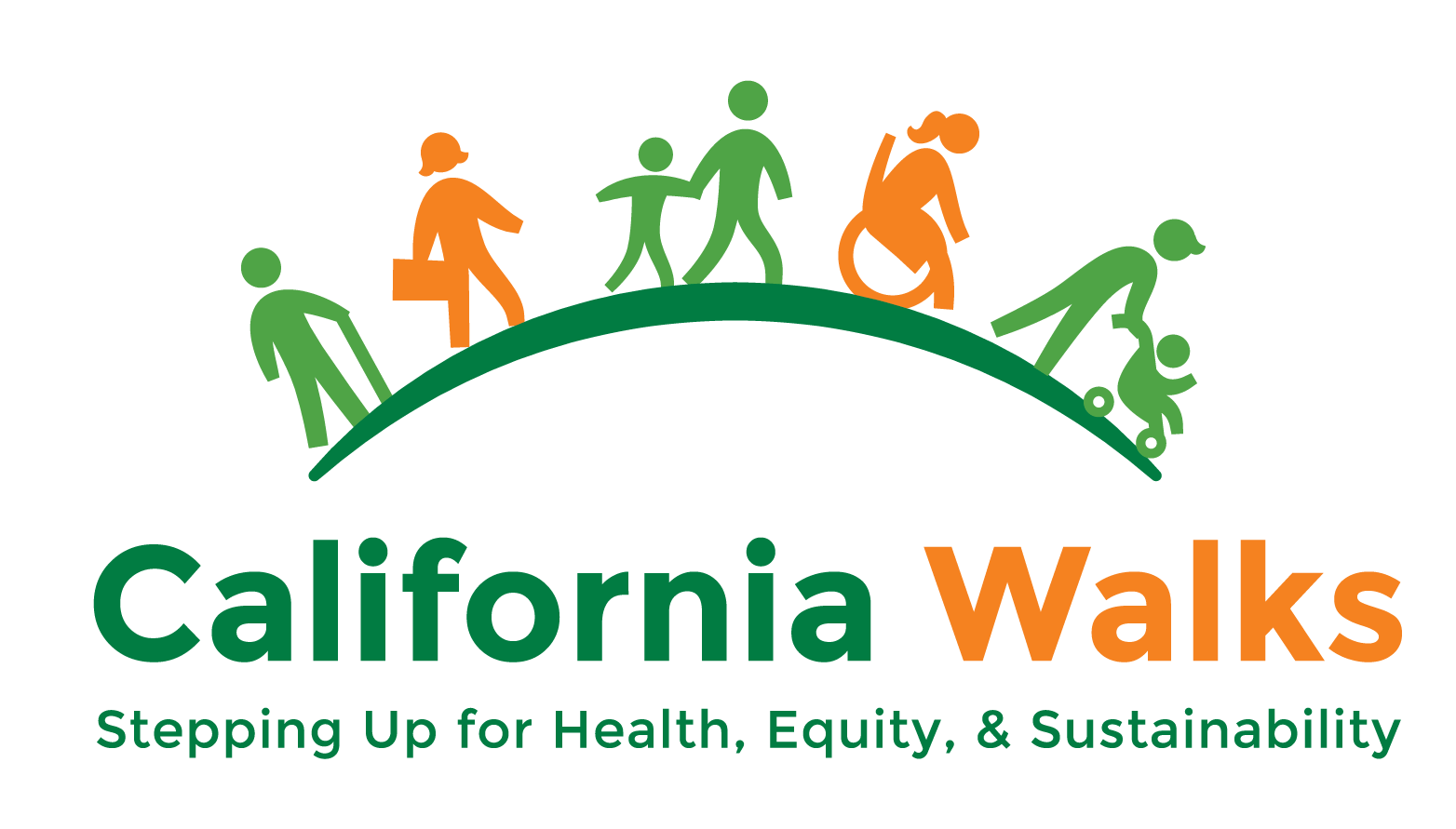A look back at our work in 2017 on safe, accessible walking and biking across California
In 2016-2017, with generous support from the California Office of Traffic Safety and in partnership with UC Berkeley’s Safe Transportation Research and Education Center (SafeTREC), California Walks continued to make walking and biking safe and accessible for all Californians through our Community Pedestrian and Bicycle Safety Training (CPBST) and Focus Cities programs.
As the CPBST program continued into its ninth year, we expanded our outreach from 5 communities in 2016 to 20 communities in 2017. The CPBST program provides context-sensitive workshops designed to educate local communities on pedestrian and bicycle safety best practices and to develop community skills through walkability and bikeability assessments. The training workshops brought together residents of all ages, City and County officials and staff, and community-based organizations in urban, suburban, and rural communities. We had the pleasure of working with over 450 Californians representing communities in Alameda, Butte, El Dorado, Fresno, Humboldt, Kern, Los Angeles, Merced, Riverside, Sacramento, and Santa Barbara Counties.
Each CPBST workshop was tailored to support local community needs. In the City of Azusa, we hosted a school-focused workshop designed to educate parents, residents, and school district staff on safe walking and biking programs and best practices for school communities. In the City of Cudahy, the workshop and training materials were in Spanish to encourage attendance and represent the community. In Rosemont, an unincorporated community in Sacramento County, the workshop was located at a middle school, and leadership students were able to share how they get to and from school and what safety issues they encounter along the way. They then collaborated on age-specific programs to educate their peers on safe walking and biking.
Our 2016-2017 California Focus Cities pilot project came to a close with a Focus Cities Convening in San Diego on September 21. The convening was hosted by Circulate San Diego and brought together representatives from five of California’s seven Pedestrian and Bicycle Safety Focus Cities: Bakersfield, Fresno, Los Angeles, San Diego, San Francisco, San Jose, and Santa Ana.
The Federal Highway Administration (FHWA) selected California as a Pedestrian and Bicycle Safety Focus State due to its high rate of pedestrian and bicyclist fatalities. The Focus Cities program supports community efforts to build a culture of safe walking and biking through community programs and events, and we’ve been excited to engage deeply with each of the seven Focus Cities to improve safety for everyone who walks and bikes
The Focus Cities program was a joint project of UC Berkeley SafeTREC and California Walks. Our goal for the project was to create an ongoing network of advocacy, community, and agency partners from each Focus City. As part of this effort, we worked with each city to identify opportunities to support our local partners as they engage and educate residents on pedestrian and bicycle safety, and we offered to provide customized technical assistance directly to local agency staff. In 5 of the 7 cities, local organizations implemented unique projects and activities in support of safe walking and biking, and you can read more about their work in the posts we’ve archived on our site.
California Walks and SafeTREC also delivered technical assistance trainings to a number of the Focus Cities communities including a Vision Zero Walk + Bike Assessment Workshop and Vision Zero Priority Safety Corridor Assessments in San Jose. In Fresno, we worked with the Bicycle/Pedestrian Advisory Committee (BPAC) to deliver a Capacity Training Workshop which included a local case study and instruction on SafeTREC’s Transportation Injury Mapping System (TIMS). We also delivered CPBST workshops in Southwest Fresno and East Bakersfield. In the City of Santa Ana, we worked with City planning staff to organize a SafeTREC-led TIMS training for staff.
It’s been a busy year, and we are pleased that in 2018 we’ll be able to continue to support local communities making California a safer and more pleasant place to walk and bike through these two programs and more. Stay tuned for updates here on our site; on Facebook, Twitter and Instagram; and through our newsletter(which will be getting a makeover in January)

